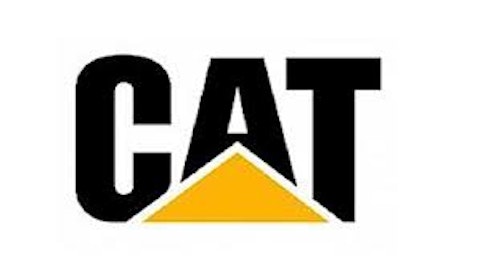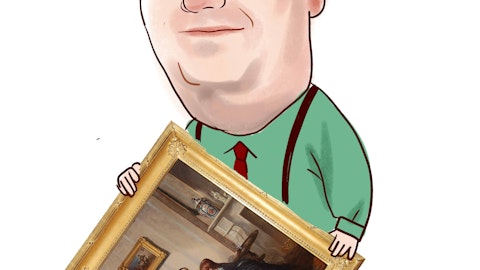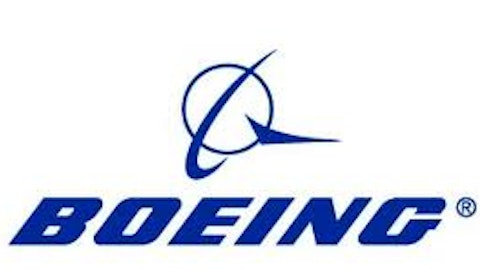The recent quarterly report of Caterpillar Inc. (NYSE:CAT) showed a drop in sales on a quarterly basis, although the company showed growth in revenues during 2012 compared to 2011. The drop in revenues and earnings was related to the change in dealers’ inventories and the whole debacle related to Siwei acquisition. Will Caterpillar continue to under-perform? Is there a silver lining?

So is there a silver lining? I think the U.S housing and infrastructure sectors might eventually lead to growth in sales in 2013.
Based on the recent housing starts report (or see here the pdf full report), the housing starts spiked in December by nearly 12.1% compared to November and by almost 37% compared to December 2011.
Building permits also rose last month. Moreover, the number of new home sold in December remained 8.8% higher than the same month in 2011. The FOMC decision to purchase mortgage backed securities at a monthly pace of $40 billion is likely to keep reviving the housing market. If the housing market in the U.S will continue to show growth, this could lead to a rise in revenues of Caterpillar in this sector.
Based to the recent federal budget outlay (pdf format), during the past three months (October to December) the “Total–Federal Highway Administration” provision reached $17,729 million compared to $11,926 million in the parallel period in 2011. The rise in this provision could suggest an increase in government spending in highway infrastructure – another one of Caterpillar’s business segment.
Although these reports show progress in the housing and infrastructure sectors, the construction segment of Caterpillar didn’t grow in the fourth quarter: revenues in North America from construction segment declined by 17% compared to the parallel quarter in 2011. This drop in sales, however, was the lowest rate compared to other regions.
In terms of annual dividend yield, which is currently at 2.11%, Caterpillar still has a small lead over other heavy machinery companies such as Cummins Inc. (NYSE:CMI) or Deere & Company (NYSE:DE): the annual yield of Cummins is 1.72% and Deere offers an annual yield of 1.94%. But all these companies aren’t able to pay their respective dividend with their free cash flow (CF from operating activities and investing). Caterpillar’s free cash flow as of September 2012 reached ($1.09) billion. So the company wasn’t able to pay its $937 million dividend from the free CF.
This could explain the company’s issuance of nearly $5 billion of debt in the first nine months of 2012.
Deere was also unable to pay its dividend with its free cash flow as it reached ($2.8) billion. Kubota Corp (NYSE:KUB) also had a negative free cash flow of around (24.6) billion yen, which was nearly ($272) million. This negative free cash flow was related to the company’s sharp drop in working capital. Kubota’s annual dividend yield was at 1.72%.
Despite the rise in Caterpillar’s debt, its debt to equity of Caterpillar reached 2.2, which is lower than the 2.4 it was back in September 2011. Nonetheless, this ratio is much higher than other heavy machinery companies such as Cummins – its debt to equity ratio is only 0.1 – or Kubota – its debt to equity ratio is 0.6. Deere, on the other hand, has a relatively high debt to equity ratio of 4.7, which means that both Deere & Company (NYSE:DE) and Caterpillar are much more leveraged than Kubota or Cummins. This situation along with the negative free cash flow poses a liquidity and financial risk on these companies.
The bottom line: Caterpillar is likely to keep presenting little to no growth in revenues in the coming months. The whole Siwei acquisition debacle might pose additional uncertainty around the company’s finances and could impede its progress in China. The company’s cash flow might also pose a threat, however keep in mind that the situation isn’t better to other leading heavy machinery companies on this front. Finally, I think the housing and infrastructure sectors in the U.S might eventually lead to a rise in revenues for CAT.
For further Reading see: Why Caterpillar isn’t Rising? Just blame Oil
The author holds no positions in stocks mentioned and does not plan to initiate positions within 120 hours of the posting of this article. This article is to be used for educational, research and informational purposes only and does not constitute investment advice. There are no guarantees, expressed or implied, of future positive returns in regards to the subject matter contained herein. Understand the risks inherent in investing before making the decision to invest or consult an investment professional for more information. Reasonable due diligence has been performed in regards to the information in this article. However, the author expressly disclaims any liability for accidental omissions of information or errors in fact.
The article Will This CAT Continue to Lick Its Wounds? originally appeared on Fool.com and is written by Lior Cohen.
Copyright © 1995 – 2013 The Motley Fool, LLC. All rights reserved. The Motley Fool has a disclosure policy.




